Introduction to Distributed Photovoltaic Power Generation Projects
The Concept of Distributed Photovoltaic Generation
Distributed photovoltaic power generation system refers to a distributed power generation system that uses photovoltaic modules to directly convert solar energy into electrical energy. It is a new type of power generation and comprehensive utilization method of energy with broad development prospects. It advocates the principle of nearby power generation, nearby grid connection, nearby conversion, and nearby utilization. It can not only effectively improve the power generation of photovoltaic power stations of the same scale, but also effectively solves the problem of power loss in boosting and long-distance transportation.
At present, the most widely used distributed photovoltaic power generation system is a photovoltaic power generation project built on the rooftop of urban buildings. It can make good use of idle rooftop resources and make full use of local solar energy resources to replace and reduce fossil energy consumption. It is a new type of green and environmental protection project based on the principle of "self-generation and self-use, extra electricity being injected to the grid, nearby conversion, and nearby use". This type of project needs to be connected to the public power grid, and can supply power to nearby users along with the public power grid.
Advantages of Distributed photovoltaic power generation
1. After installing solar panels, it can effectively reduce the temperature of the roof of the plant, which can reduce the indoor temperature by 3-5 ° C;
2. To use nearby can effectively alleviate the tension of electricity in local areas;
3. Maintaining the system's operation only requires little maintenance;
4. The system is made of components, which can be installed quickly anywhere;
5. Free of noise, harmful emissions and pollution gases;
6. No moving part that is subject to wear, damage or requires replacement.
7. Solar resources are rich and free.
The application scope of distributed photovoltaic power generation projects
The distributed photovoltaic grid -connected power generation system is mainly concentrated in developed areas with tight power consumption and remote areas with unstable public power grids. It is more suitable for applications in the following industries:
1. Factory building in industrial fields: Especially in factories with relatively large electricity consumption and high grid electricity prices, the roof area of the factory building is large, the rooftop is wide and flat which is suitable for installation of photovoltaic arrays. In view of large electricity consumption loads, distributed photovoltaic integrated with grid system can be used locally and offsets some electricity to be purchased from grid, and thus reduces users' electricity cost.
2. Commercial buildings: similar to the effect of industrial parks. The difference is that most of commercial buildings have cement roofs, which is more conducive to installing photovoltaic arrays, but architectural aesthetics is required. According to the features of the service industries’ buildings such as commercial buildings, office buildings, hotels, conference centers, resorts, etc., the characteristics of electricity load are generally high during the day and low at night, which can better match the characteristics of photovoltaic power generation.
3. Agricultural facilities: There are a large number of photovoltaic roof area in rural areas, including the roof of its own residential houses, vegetable greenhouses, fish ponds, etc. Rural areas are often at the end of the public power grid and power supply is difficult to be guaranteed, moreover, the power quality is poor. Establishment of distributed photovoltaic system in rural area can improve the power guarantee rate and the quality of electrical energy.
4. Public buildings such as municipalities: Due to unified and regulatory management, relatively reliable user load and business behavior, high enthusiasm for installation, public buildings such as municipalities are also suitable for concentrated construction of distributed photovoltaic system in combined regions.
5. Remote farming and pastoral areas and islands: Due to the far -reaching grid, millions of people are not accessible to power supply in remote agricultural and pastoral areas in China like Tibet, Qinghai, Xinjiang, Inner Mongolia, Gansu, Sichuan, and coastal islands. Off-grid type photovoltaic system or other energy inter-complementary micro -grid power generation systems are very suitable for application in these areas.
6. Family villa roof: Installing photovoltaic power generation projects on idle roofs and balconies can not only ensure their own electricity consumption, but also can sell power to the grid after self -use and the benefits recovery are obvious. And after the project completion, the overall esthetics and environmental protection performance are very good, and it is one of the highlights of modern high -quality life.
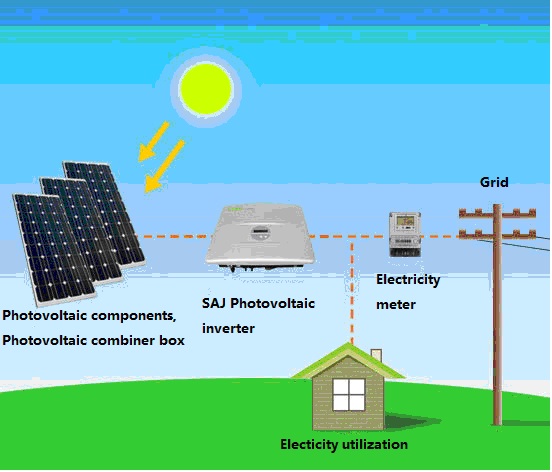
Diagram of distributed photovoltaic power generation system
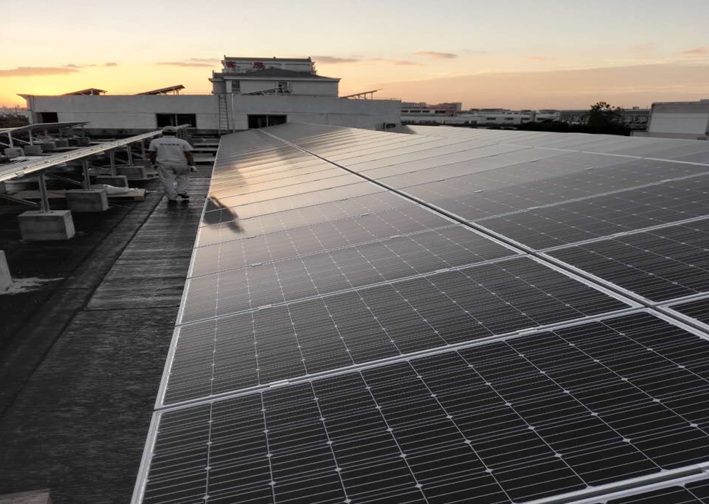
Project in operation in Dongkai, Songjiang,Shanghai,China
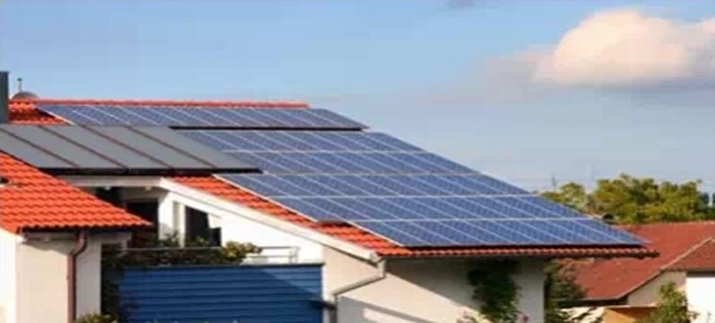
Domestic use on rooftop
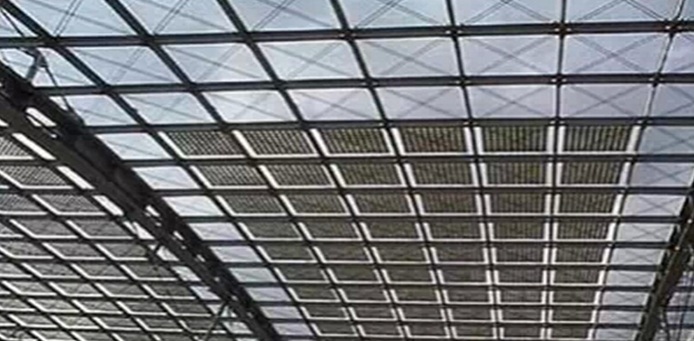
Photovoltaic sunlight room rooftop
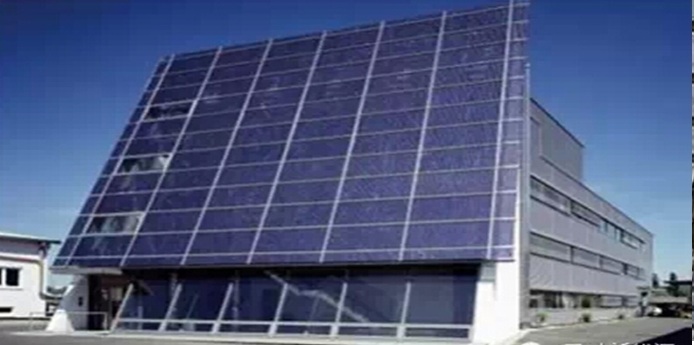
Photovoltaic curtain wall
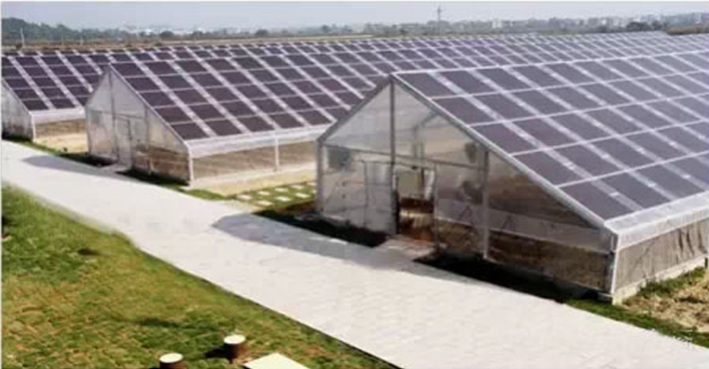
Agricultural greenhouses
Cooperation mode of distributed photovoltaic power generation projects
a.Enterprise Self -investment Model: Property owners hold the funds to build the project. Our company provides a series of services such as design, procurement, construction, operation and maintenance (EPC). After completion of the project, electricity fee income, subsidy income is enjoyed by the property owner
b. Contractual energy management model: Investment and construction are made by the third-party enterprises. Property owners provide the roof resources for free. After completion of the project, electricity is sold to property owners or the lessee, and electricity prices are given a certain discount on the basis of the electricity price of the local power supply bureau.
Description of the Basic Scheme of Rooftop Distributed photovoltaic power generation system
1. Determination of the photovoltaic power station scale. The scale depends on the size of the roof area and the conditions available. Concrete roof is preferable, but too high parapet and buildings around rooftop and other facilities on rooftop may affect the installation of photovoltaic panels which shall be avoided. Usually, for10000 ㎡ of rooftop with good condition and with nothing interrupting sunlight, 800—1000KW of battery panel components can be installed. That is close to the scale of 1MW. If your company has 30000 ㎡rooftop area available, 3000KW of photovoltaic components can be installed which can establish a photovoltaic power station with the scale of 3MW.
2. Statistics of power generation capacity. The power generation of the distributed photovoltaic power station is mainly related to the quality of photovoltaic modules (photovoltaic conversion ratio), inverter and other system equipment ratio, the direction, slope, quantity and region of the roof photovoltaic panels. For example, the annual average light time inShanghaiis about 1200 hours, which is belonging to the category three of light areas inChina. If 1MW (1000KW) photovoltaic power station is installed, the annual power generation will be between 1 million and 1.1 million KWH. If your company can install 3MW panel components, the total annual power generation is roughly between 3 million-3.3 million KWH.
3.Investment mode and responsibilities and obligations. Distributed photovoltaic power stations are generally invested by the owner corporation of the power station, who is responsible for project application, policy engagement, fund raising, power station design, engineering construction, daily management and maintenance, power station charges, etc. The roof owner corporation is responsible for providing the roof, assisting the power station investors to carry out the investment, construction and operation of the power station, and giving priority to the use of the power generated by the photovoltaic power station.